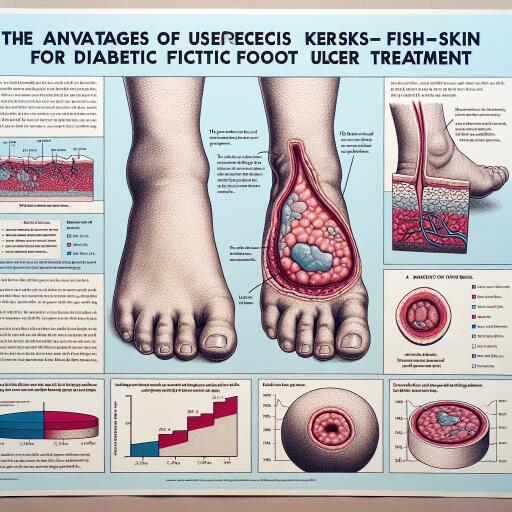
Study Demonstrates Superiority of Kerecis Fish-Skin for Diabetic Foot Ulcer Treatment
The innovative use of fish-skin for tissue regeneration, pioneered by Kerecis, is gaining recognition in the medical field for its potential to transform diabetic foot care. A pivotal study, recently published in a prominent medical journal, highlights significant advancements in the treatment of diabetic foot ulcers using fish-skin grafts. This new approach appears to offer a more effective alternative to traditional methods.
The expansive study, conducted on 255 patients across four countries, is the largest randomized controlled trial investigating the effectiveness of biological skin substitutes on severe foot ulcers. Particularly, it focused on addressing University of Texas grade 2 and 3 diabetic foot ulcers, showcasing promising results that suggest fish-skin grafts surpass the conventional standard of care.
Encouraging Results from Innovative Treatment Approach
The trial, titled “Odinn” after the Norse god associated with healing, stands out for its robust design and extensive scope. This study marks a milestone with its large sample size and focus on complex wounds. Diabetic foot ulcers (DFUs) present serious health challenges, often leading to complications such as infections and even amputations, which are particularly critical in grade 3 cases. The Odinn trial’s findings indicate that using fish-skin grafts can dramatically improve healing outcomes, delivering newfound hope to many affected individuals.
Despite DFUs being chronic and severe, with significant implications on patients’ quality of life and survival rates, this study’s results suggest a notable shift could be on the horizon in clinical practices, promoting better management of these conditions.
Transformative Impact on Clinical Practice
Chairman of Kerecis’s Scientific Advisory Board, John Lantis, MD, refers to the trial as a pivotal moment in diabetic foot ulcer treatment, particularly for its implications on complex cases. The comprehensive trial methodology and substantial results may soon position fish-skin treatment as the preferred choice for addressing severe diabetic foot ulcers. This method holds potential not only for better patient recovery but also for enhancing overall quality of life.
Kerecis’s founder and CEO, Fertram Sigurjonsson, expressed his pride in these advancements, emphasizing the transformative nature of their treatment in dealing with serious wounds and tissue damage. Their extensive study and efforts aim to establish fish-skin as the new standard of care worldwide.
Sustainable, Innovative Solutions
Kerecis has committed to driving innovative, eco-friendly solutions in medical treatments. Their fish-skin and fatty acid products, based on patented technology, support the healing process without the risk of disease transfer from cold-water fish to humans. The products are crafted to retain the natural characteristics of fish-skin, offering enhanced strength and biological functionality.
The company, recognized as a leader in the U.S. biologics skin market, stands out due to its unique utilization of intact fish-skin in medical devices. Their comprehensive range of products addresses various medical applications, consistently proving more effective than competing solutions in clinical studies.
Conclusion
Kerecis’s sustainable practices align with global developmental goals, using Icelandic fish and renewable energy. This approach not only supports better health outcomes but also promotes a more environmentally conscious methodology in medical treatment development. The promising findings from the Odinn study reiterate Kerecis’s position at the forefront of advancing wound care and fortifying their mission to offer effective, sustainable solutions for complex medical challenges.





Leave a Reply